
Postal service in the United States began with the delivery of stampless letters whose cost was borne by the receiving person, later encompassed pre-paid letters carried by private mail carriers and provisional post offices, and culminated in a system of universal prepayment that required all letters to bear nationally issued adhesive postage stamps.
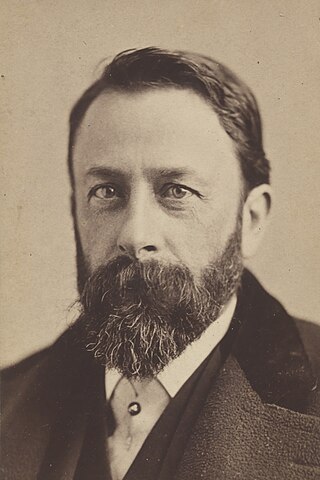
Albert Bierstadt was a German American painter best known for his lavish, sweeping landscapes of the American West. He joined several journeys of the Westward Expansion to paint the scenes. He was not the first artist to record the sites, but he was the foremost painter of them for the remainder of the 19th century.
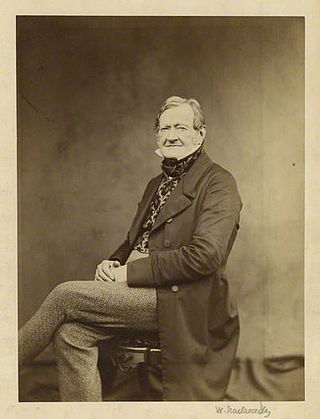
William Mulready was an Irish genre painter living in London. He is best known for his romanticising depictions of rural scenes, and for creating Mulready stationery letter sheets, issued at the same time as the Penny Black postage stamp.
Bart Forbes is an American painter and illustrator. He has worked for most of the popular magazines, amongst them Time, Sports Illustrated, Ladies' Home Journal, McCall's and Golf Digest, as well as a broad selection of corporate clients. His works include postage stamps for the US Postal Service, Time magazine's Man of the Year article on Jimmy Carter, paintings of the 1988 Seoul Olympics, theme paintings for the PGA tournaments and club houses and paintings of the Dallas Cowboys for Jerry Jones' private jet. He was the recipient of the 1986 Sport Artist of the Year Award given annually by the American Sport Art Museum and Archives. The Sports Art of Bart Forbes, a collection of his most famous sports paintings, was published by Beckett in 1998. He was inducted into the Society of Illustrators Hall of Fame in 2017.

Stevan Dohanos was an American artist and illustrator of the social realism school, best known for his Saturday Evening Post covers, and responsible for several of the Don't Talk set of World War II propaganda posters. He named Grant Wood and Edward Hopper as the greatest influences on his painting.
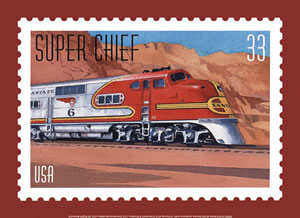
In August 1999, the United States Postal Service issued a set of 33¢ postage stamps entitled All Aboard! 20th Century American Trains to "pay tribute to American industry and design, and specifically to the heritage of our railroads." Artist Ted Rose created five watercolor images depicting the following celebrated American named passenger trains from the 1930s and 1940s:

Kadir Nelson is a Los Angeles–based painter, illustrator, and author who is best known for his paintings often featured on the covers of The New Yorker magazine, and album covers for Michael Jackson and Drake. His work is focused on African-American culture and history. The New York Times describes his work as: "sumptuous, deeply affecting work. Nelson’s paintings are drenched in ambience, and often overt symbolism. He has twice been a Caldecott honor recipient and won the 2020 Caldecott Medal for his illustrations in The Undefeated.
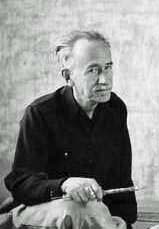
Charles Ragland Bunnell (1897–1968), was an American painter, printmaker, and muralist.

Nature of America is a series of twelve self-adhesive stamp sheets that the United States Postal Service released annually between 1999 and 2010 starting with the Sonoran Desert sheet and ending with the Hawaiian Rain Forest Sheet. Like the Celebrate the Century stamp series, these were printed on large sheets 9"x8¾", but differed from the former in that they were self adhesive and not gummed.
Tim O'Brien is an American artist who works in a realistic style. His illustrations have appeared on the covers and interior pages of magazines such as Time, Rolling Stone, GQ, Esquire, National Geographic, Der Spiegel, and others. His illustrations are also used by the US Postal Service for postage stamps.
William Arthur Smith was an American artist.
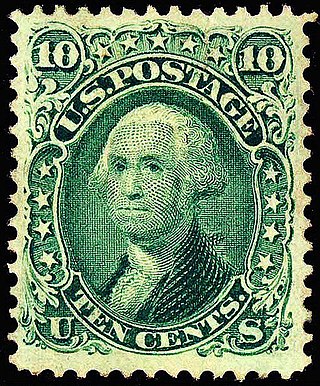
Presidents of the United States have frequently appeared on U.S. postage stamps since the mid-19th century. The United States Post Office Department released its first two postage stamps in 1847, featuring George Washington on one, and Benjamin Franklin on the other. The advent of presidents on postage stamps has been definitive to U.S. postage stamp design since the first issues were released and set the precedent that U.S. stamp designs would follow for many generations.

Charles Ransom Chickering was best known as the freelance artist who designed some 77 postage stamps for the U.S. Post Office while working at the Bureau of Engraving and Printing in Washington, DC. His career as a professional artist began while working as an illustrator for the U.S. Army recording and drawing medical illustrations of the wounded and dead during the First World War. He continued the practice in civilian life and became a noted artist-illustrator who worked for a number of prominent magazines, including The Saturday Evening Post, which were very popular during the pre-television era of the 1920s to 1940s. After the Second World War Chickering began working for the U.S. Post office designing U.S. Postage stamps, some of which became famous. Later in life he became a designer and illustrator for first day cover cachets that were also popular among stamp and postal history collectors.

Emil Fuchs was an Austrian–American sculptor, medallist, painter, and author who worked in Vienna, London and New York. He painted portraits of Queen Victoria and Edward VII and was fashionable among London high society in the early 20th century.
Puerto Rico topics have been featured on the stamps of Spain and of the United States. Spanish stamps are found at Postage stamps and postal history of Puerto Rico.

Territories of the United States on stamps discusses commemorative postal issues devoted to lands that have been ceded to the nation or purchased by treaty in conjunction with both war and peace. Thirteen states have been created from colonial territories, two from independent republics, four from previous states in the Union, and an additional thirty-one from United States territories.

The history of Virginia through the colonial period on into contemporary times has been depicted and commemorated on postage stamps accounting for many important personalities, places and events involving the nation's history. Themes are particularly rich in early American and new nation history, historical landmarks, and Virginia-born presidents.

General George Washington at Trenton is a large full-length portrait in oil painted in 1792 by the American artist John Trumbull of General George Washington at Trenton, New Jersey, on the night of January 2, 1777, during the American Revolutionary War. This is the night after the Battle of the Assunpink Creek, also known as the Second Battle of Trenton, and before the decisive victory at the Battle of Princeton the next day. The artist considered this portrait "the best certainly of those which I painted." The portrait is on view at the Yale University Art Gallery in New Haven, Connecticut, an 1806 gift of the Society of the Cincinnati in Connecticut. It was commissioned by the city of Charleston, South Carolina, but was rejected by the city, resulting in Trumbull painting another version.
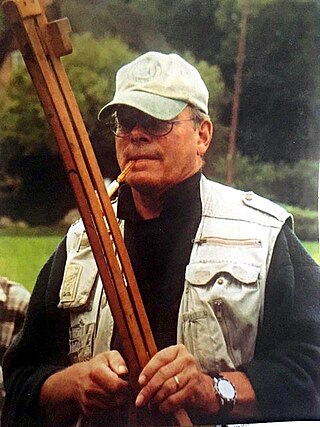
Charles Clark Reid was an American painter, illustrator, and teacher, notable for his watercolor style. He won numerous national and international awards for both his watercolor and oil works, and also hosted many workshops in the US and abroad. He published numerous books and instructional DVDs and created a postage stamp and an iconic ad campaign with his watercolor depictions. His watercolor works and oil paintings are in private and college museum collections.















